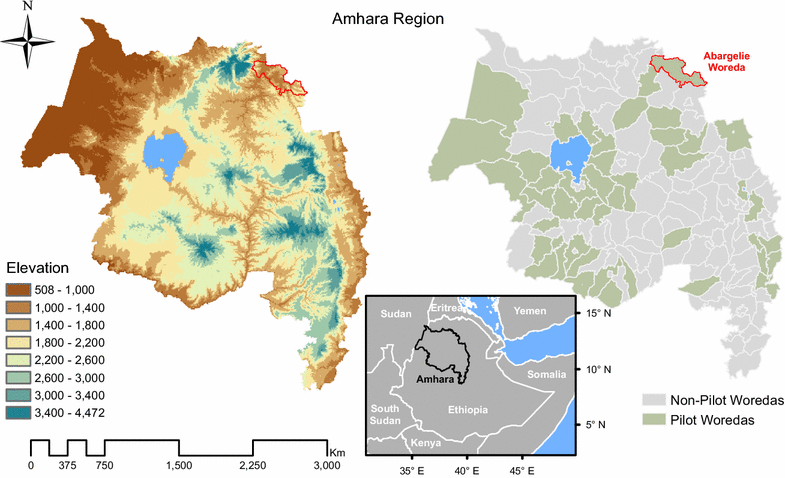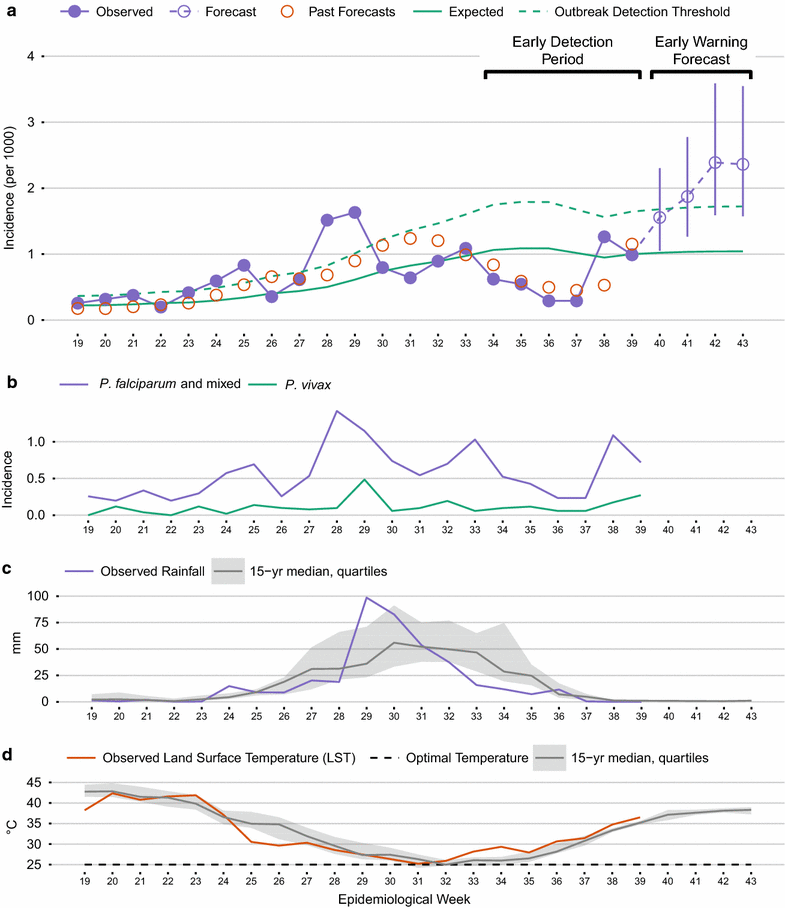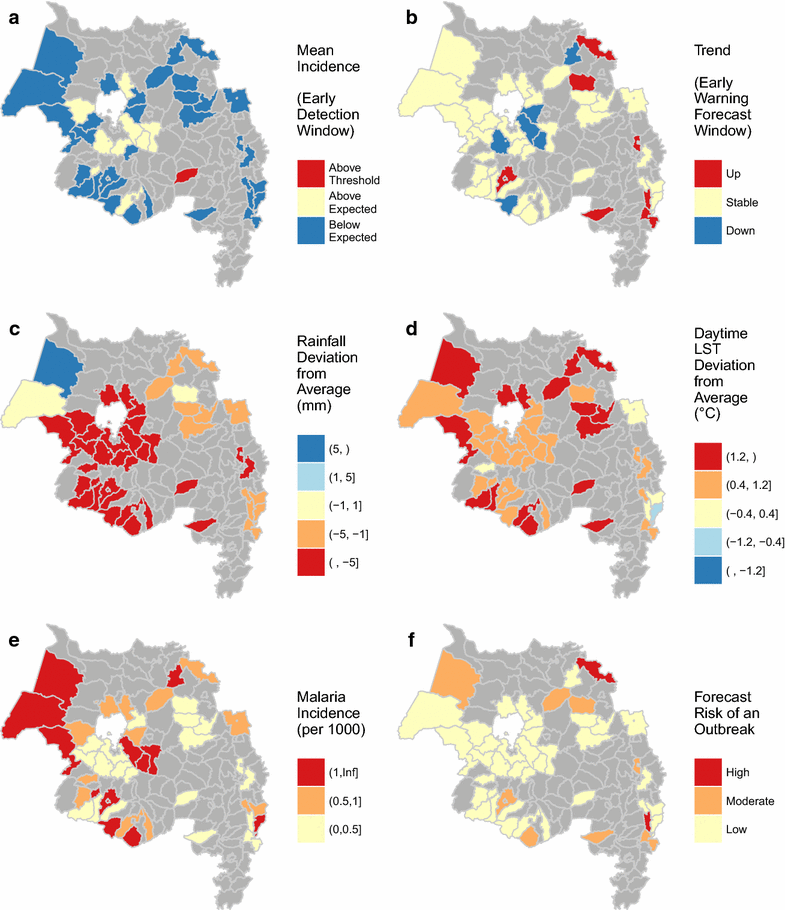Integrating malaria surveillance with climate data for outbreak detection and forecasting: the EPIDEMIA system
- PMID: 28231803
- PMCID: PMC5324298
- DOI: 10.1186/s12936-017-1735-x
Integrating malaria surveillance with climate data for outbreak detection and forecasting: the EPIDEMIA system
Abstract
Background: Early indication of an emerging malaria epidemic can provide an opportunity for proactive interventions. Challenges to the identification of nascent malaria epidemics include obtaining recent epidemiological surveillance data, spatially and temporally harmonizing this information with timely data on environmental precursors, applying models for early detection and early warning, and communicating results to public health officials. Automated web-based informatics systems can provide a solution to these problems, but their implementation in real-world settings has been limited.
Methods: The Epidemic Prognosis Incorporating Disease and Environmental Monitoring for Integrated Assessment (EPIDEMIA) computer system was designed and implemented to integrate disease surveillance with environmental monitoring in support of operational malaria forecasting in the Amhara region of Ethiopia. A co-design workshop was held with computer scientists, epidemiological modelers, and public health partners to develop an initial list of system requirements. Subsequent updates to the system were based on feedback obtained from system evaluation workshops and assessments conducted by a steering committee of users in the public health sector.
Results: The system integrated epidemiological data uploaded weekly by the Amhara Regional Health Bureau with remotely-sensed environmental data freely available from online archives. Environmental data were acquired and processed automatically by the EASTWeb software program. Additional software was developed to implement a public health interface for data upload and download, harmonize the epidemiological and environmental data into a unified database, automatically update time series forecasting models, and generate formatted reports. Reporting features included district-level control charts and maps summarizing epidemiological indicators of emerging malaria outbreaks, environmental risk factors, and forecasts of future malaria risk.
Conclusions: Successful implementation and use of EPIDEMIA is an important step forward in the use of epidemiological and environmental informatics systems for malaria surveillance. Developing software to automate the workflow steps while remaining robust to continual changes in the input data streams was a key technical challenge. Continual stakeholder involvement throughout design, implementation, and operation has created a strong enabling environment that will facilitate the ongoing development, application, and testing of the system.
Keywords: Early detection; Early warning; Environmental data; Forecasting; Malaria informatics system; Remote sensing; Risk map; Surveillance.
Figures




References
-
- Maes P, Harries AD, Van den Bergh R, Noor A, Snow RW, Tayler-Smith K, et al. Can timely vector control interventions triggered by atypical environmental conditions prevent malaria epidemics? A case-study from Wajir County, Kenya. PLoS ONE. 2014;9:e92386. doi: 10.1371/journal.pone.0092386. - DOI - PMC - PubMed
Publication types
MeSH terms
Grants and funding
LinkOut - more resources
Full Text Sources
Other Literature Sources
Medical

